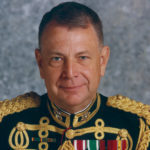Achieve through Music


The United System for Winds and Percussion is an individual or group lesson system developed for teachers by veteran music educator and well-known composer Peter Sciaino. Specifically created to fit the need for repertoire that is not only flexible but simultaneously multi-level – the United System for Winds and Percussion solves a problem that more and more programs are facing.
SOLO PERFORMANCE COLLECTION
18 Festival Solos with Piano Accompaniment



















